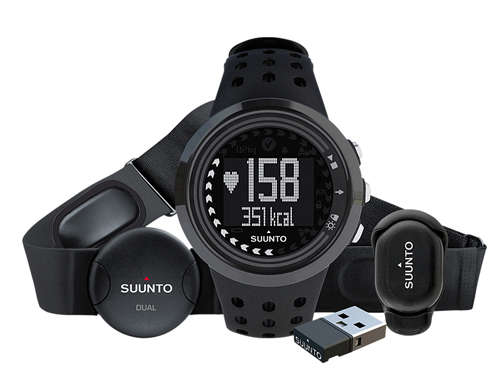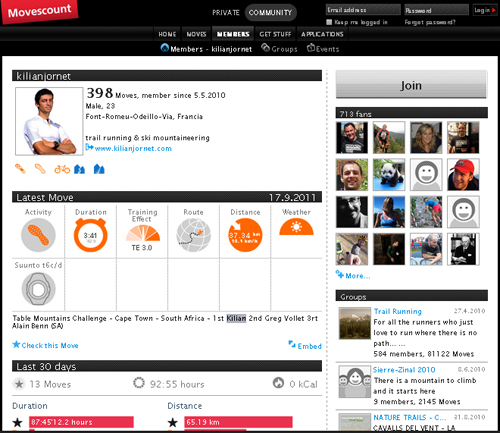By CHELSEY MAGNESS
As a member of Team GearJunkie/YogaSlackers I train hard year-round for a circuit of adventure races and major competitive events around the country and the world. My new training “partner” over the past few weeks, a small fitness package from Suunto, has changed my perception of what a watch can do. The M5 Running Pack from Suunto includes a heart-rate strap, a “foot-pod” device, its namesake Suunto M5 watch, and a USB plug that syncs the entire system with your computer and Suunto’s Movescount training site.
The kit costs a healthy dime — $319 — but for that you get almost all the tools you could need to train and track heart-rate, pace, speed, and other fitness-minded stats as you run.

I have been testing the M5 Running Pack for a month, and even though I am not usually one for geeking out on my fitness “stats,” the Suunto setup has grown on me. First off, it is easy to use — you can be outdoors and running 10 minutes after opening the box. Cinch on the watch, strap on the chest belt, and put the pod on your shoe — these are the three components. Total setup time is approximately 40 seconds.
On the run, the system — watch, strap, and pod — works together to track speed, distance, heart rate, and then spit out exercise recommendations on the watch face. For example, based on my previous workouts, today it suggested that I do a 30-minute run at a max pace of 162 to 175 heartbeats per minute.
Like a little coach on your wrist, there are workout “plans” built into the watch’s software for improving fitness and weight management. Or you can customize and pick your own personal training program type. When you start a program, each morning the M5 will give you a suggested workout for that day. It adapts each day’s workout from an ongoing fitness log it keeps on you. If I decide to skip a day, the system adjusts the workout for the next day, recalculating from your stored record of workouts to maximize effectiveness of each training day as it relates to a long-term plan.

After each workout, the Suunto gives you a suggested recovery time based on how fast, how far, and for how long you went. For my 8-mile run yesterday, it suggested I recover for at least 14 hours before working out again. If you want to geek out even more, on a computer you can store, analyze, and share data from your workout via Suunto’s software and on Movescount.com.
While $319 might seem like a lot for the package, it is cheaper than a treadmill or many gym passes — and it gets you outdoors, which is always a big plus in my book. Other than the high price, I had one minor additional gripe: The watch’s screen is a bit hard to see, especially when I am running in the sun. I would like to see Suunto brighten the digits on the watch face so that on the go viewing my real-time feedback, pace, and speed is even faster.
With a litany of fitness watches on the market, how does one pick between something like the M5 versus a GPS-based watch from a company like Garmin or Timex? For me, the answer was in the Suunto’s battery life plus its always-on “signal” from the foot pod. You don’t get mapping with the M5, but what you get is a watch that has a battery that lasts for months, not hours. (GPS watches require recharging almost daily, basically eliminating their usefulness on wilderness trips where you will not have a power source.)

GPS watches like the Garmin Forerunner series are excellent products. At least two other members of Team GearJunkie/YogaSlackers use them to train and track routes. Suunto touts its foot pod as being more accurate than a GPS to measure pace and speed. Another advantage, if needed you can use the foot pod indoors, something not possible with GPS.
The Suunto foot pod tracks speed and pace via an accelerometer gauge. You can get speed and pace, as well as elevation, from GPS watches. But you do need to have a clear signal and oftentimes wait for satellites to “come into alignment” overhead. It can be frustrating to wait for a connection when you’re standing outside just wanting to run.
—Chelsey Magness is a member of Team GearJunkie/YogaSlackers.








